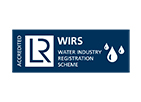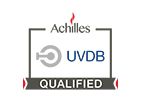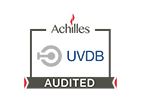Balfour Beatty Utility Solutions (BBUSL) is the principal contractor for South West Water for sewer infrastructure installations. The new development named Cranbrook close to Exeter intends to deliver a self-sufficient, low-carbon new town which is intended to be the first stand-alone development in Devon since the middle ages:
‘Development at Cranbrook is now under way and efforts in delivering this self- sufficient, low-carbon new town, the first stand-alone settlement in Devon since the Middle Ages, have won national acclaim. A sustainable community located close to real employment opportunities, among them a significant number of highly skilled jobs will be an exemplar for green travel’. (East Devon District Council, The New East Devon Local Plan 2006 to 2026, page 2.
Part of this new development is the installation of an up-to-date sewer infrastructure by South West Water. BBUSL were tasked as the principal contractor for this scheme.
Problem
The sewer scheme produced 4000m3 of very wet sandy/clay arisings which were intended to be taken off site for disposal. Once this material had been disposed of, approx. 8500 tonnes of primary or recycled aggregates would be imported for use as the backfill and sub-base layers of the road make up, once the sewer pipe had been installed. The problem that occurred was that the 4000m3 of wet sandy/clay arisings had a very high moisture content which the local landfills and disposal sites would not accept. In addition to this the high moisture content would make the arisings very difficult to transport as they could potentially seep/leak out of the Lorries during transport.
Solution
To overcome this problem, in the most sustainable manner, BBUSL turned to Conroy who deployed the Stabiltech Mobile Batching Plant that travels to site and processes the wet arisings with the SMR Proprietary Binder (supplied by SMR Ltd). Once the material has been processed then it can be re-used 24 hours later as the backfill layer.
Reduction of Carbon Footprint – Lorry Movements
By carrying out the process in-situ the amount of lorry movements required were minimal compared to traditional methods. If traditional methods had been used, the entire 4000m3 of wet sandy/clay material would have been taken off site and disposed of (most likely to landfill). Primary aggregate would then have been imported to site to construct the backfill and sub-base layers for the sewer scheme. By using the Mobile Batching Unit, it was not necessary for any transportation either on, or off site.
Reduction of Landfill
By using the Mobile Batching Unit in conjunction with the SMR Proprietary Binder all excavated arisings were re-used and converted into a recycled capping/fill material that was used as the backfill layer. This resulted in zero material being sent to landfill and zero use of primary aggregates.
Reduction of use of Quarried Aggregates
The 4000m3 of wet sandy/clay material was processed through the Mobile Batching Unit with the SMR Proprietary Binder into a recycled stabilised capping material. This stabilised capping material is used as the backfill layer which would typically be constructed using imported Primary Aggregates.
Reduced Costs
By re-using the excavated material on-site this eliminated the need for:
-Primary aggregates
-Tipping fees
Reduced Job Time
As the 4000m3 of wet sandy/clay material was recycled on-site, this reduced the job time as there were no requirements for muck away transportation and quarried aggregate delivery.
| Traditional Methodology | Conroys Methodology | |
|---|---|---|
| Material sent to Landfill | 4000m3 | 0 tonnes |
| Imported Quarried Aggregates | 8600 tonnes | 0 tonnes |
| Lorry Movements | 430 | 0 |







